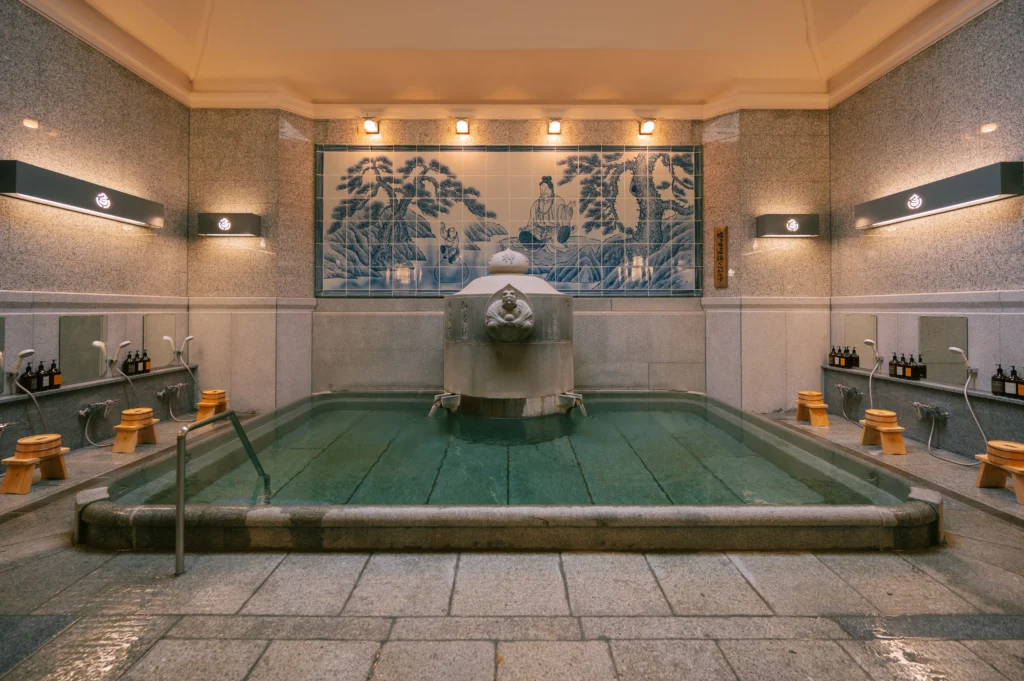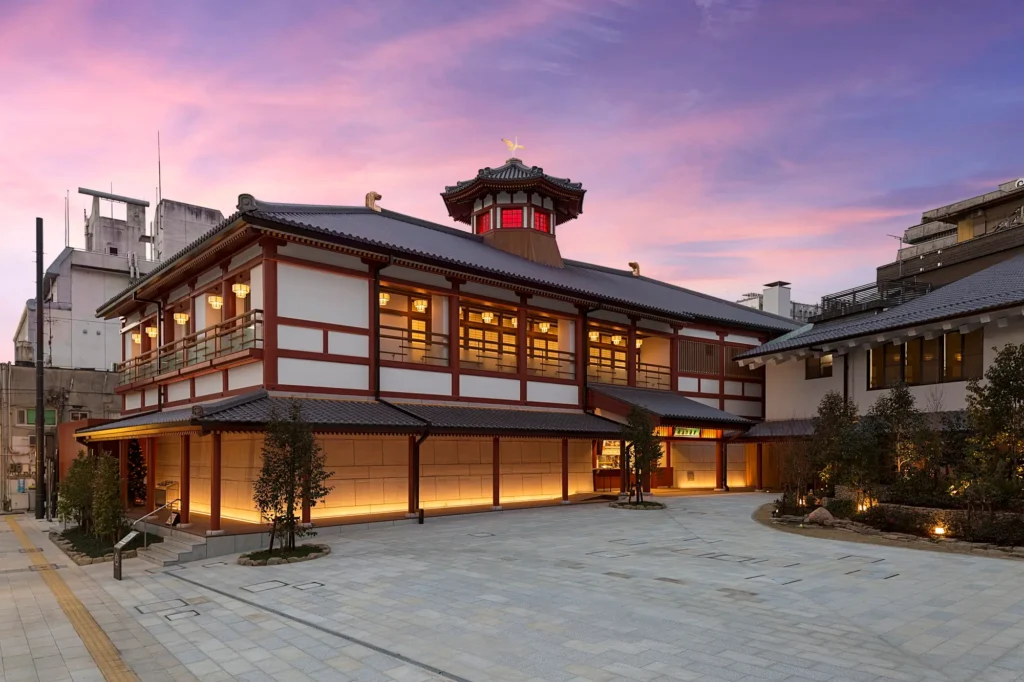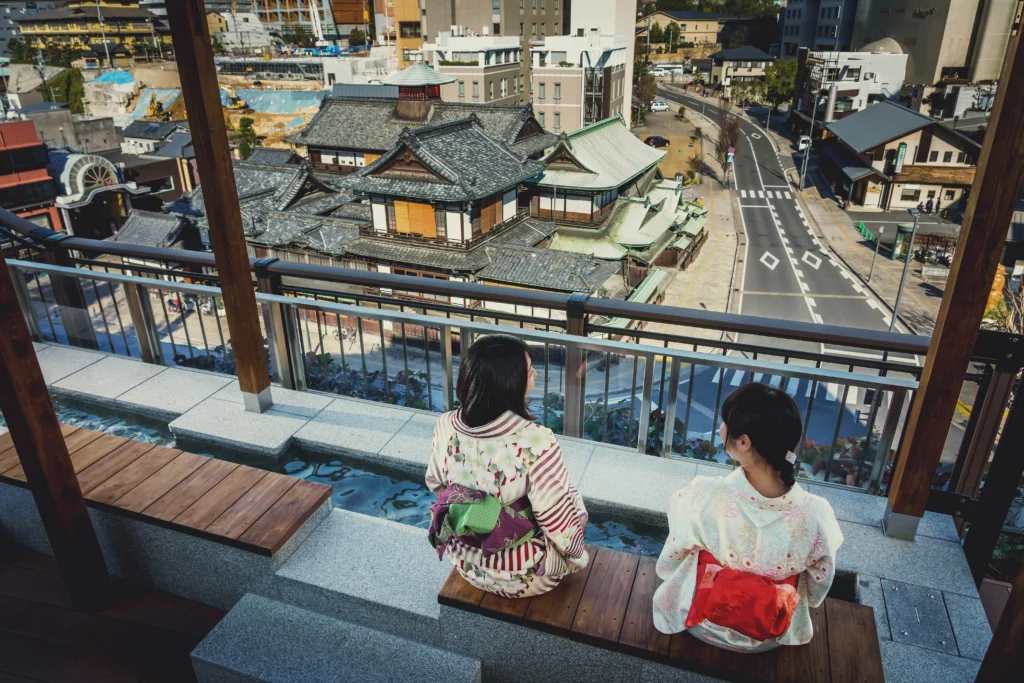
Dōgo Onsen (道後温泉), one of the most legendary and admired hot springs in Japan, is located in the city of Matsuyama, in Ehime Prefecture. The famous public bathhouse was built in 1894, and in addition to the renowned quality of its waters, the building itself boasts impressive architecture. After nearly six years of renovation, the bathhouse fully reopened in July 2024 and is an experience not to be missed on your visit to Shikoku.
The history of Dōgo Onsen dates back around 3,000 years, as recorded in the Man’yōshū, the oldest surviving collection of Japanese poetry. Dōgo Onsen also appears as a setting in Botchan, the semi-autobiographical novel by Soseki Natsume, and it served as inspiration for Hayao Miyazaki’s Spirited Away. The main building is an architectural marvel, made up of seven interconnected structures, which explains the unusual layout of its hallways and staircases. It was carefully designed so that no major structural elements sit directly above the hot spring, thus preventing moisture damage. In 1946, an earthquake nearly stopped the spring, but it was restored—and its flow was even tripled.

The alkaline hot spring waters of Dōgo Onsen are renowned for their gentleness on the skin, making them ideal for beauty treatments. The bathhouse draws from 18 different springs at varying temperatures, which are blended to reach around 42 °C, offering an authentic and natural bathing experience directly from the source.
The complex is made up of three buildings, each with its own history and function. The most famous is Dōgo Onsen Honkan, a three-story building designated as an Important Cultural Property of Japan and a symbol of the onsen. Just a few steps away is the modern Asuka-no-Yu, opened in 2017, which blends contemporary design with elements from the Asuka period and offers hot spring baths, rest areas decorated by local artists, and a more intimate atmosphere. Tsubaki-no-Yu is a simpler bathhouse frequented by local residents—perfect for those seeking a relaxed, crowd-free experience.

The prices at Honkan are quite affordable, especially considering that it will be a unique experience during your trip. Level 1 (700 JPY) grants access to the Kami no Yu bath for 60 minutes. Level 2 (1,300 JPY) adds a public tatami room. Level 3 (2,000 JPY) includes the Tama no Yu bath and another tatami room. Level 4 (2,500 JPY) offers a private tatami room for 90 minutes. Guided tours are also available for 500 JPY.
Next to the historic main building of Dōgo Onsen is Sora-no-Sanpomichi, which literally means Sky Walk. Located on the southern slope of Mount Kanmuriyama, it offers a panoramic view of the onsen and the city. Among its facilities are a relaxing foot bath with hot spring water, resting areas with benches and pergolas, and a garden that changes with the seasons: cherry blossoms in spring, hydrangeas in summer, maple trees in autumn, and camellias in winter.

Our suggestion for enjoying this great space of rest and well-being is to combine it with a visit to Matsuyama to explore the Castle, one of the twelve original castles still standing in Japan. Additionally, in this region of Shikoku, you can taste healthy culinary specialties such as taimeshi (sea bream rice), Botchan dango sweets, or any of its wide variety of citrus fruits, such as mikan, dekopon, and kanpei, which are essential to its gastronomic identity.
Do you want to travel to Dōgo Onsen and experience the oldest hot spring bathhouse in Japan? Contact us, and we will design the perfect experience for an unforgettable trip.